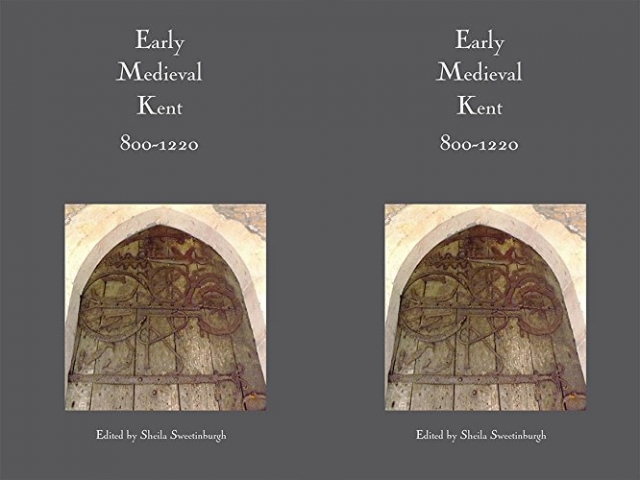Early Medieval Kent 800-1220
Book Review

Early Medieval Kent 800-1220, Sheila Sweetinburgh (ed.) (Boydell Press Kent County Council), 2016 333pp., £50 hard, ISBN 978-0-85115-583-8.
This is the tenth volume in the Kent History Project, supported by Kent County Council, that now covers the history of the county from the archaeology of the Anglo-Saxon period through to the twentieth century. Duke William’s march through Kent on his way to London after Hastings in 1066 is testimony to the importance of the county. So too are the royal fortifications at Canterbury, Dover and Rochester and the mostly successful strategy of ruling Kent through a partnership of Crown and Church. The religious communities at Canterbury Cathedral and St Augustine’s became two of the premier monasteries in England, and (following the death of Thomas Becket) international centres of pilgrimage.
Yet, as well as times of triumph, these four hundred years witnessed massive difficulties for the people of Kent, and England. Viking incursions in two major phases covering two centuries were instrumental in the loss of most royal nunneries in Kent and the sacking of Canterbury in 1011. Socially, too, this was a formative period in the county’s history. Colonisation and rural settlement were shaped by the varied physical landscape, but also by matters of lordship and landholding that together marked Kent as distinctive, later enshrined in the Customs of Kent (1293). Similarly, the growth of numerous small towns, especially coastal and inland ports, highlight the vitality of the county’s commercial development; the provision of ship service to the king by the confederation of the Cinque Ports denotes a special relationship that still exists today.
These essays provide insights into a range of topics of importance in the history of Kent during this period. To provide a context for these, the opening essay presents an assessment of the kingdom of Kent. Subsequent chapters consider the development of first rural and then urban society, the impact of the Vikings, pilgrimage and the landscape, literacy and learning, the developing monastic way of life, and parish church architecture. Three multidisciplinary chapters discuss Canterbury as a case study, while a gazetteer of place-name elements closes the book. This volume maintains the very high standard set by other editors in the series.

